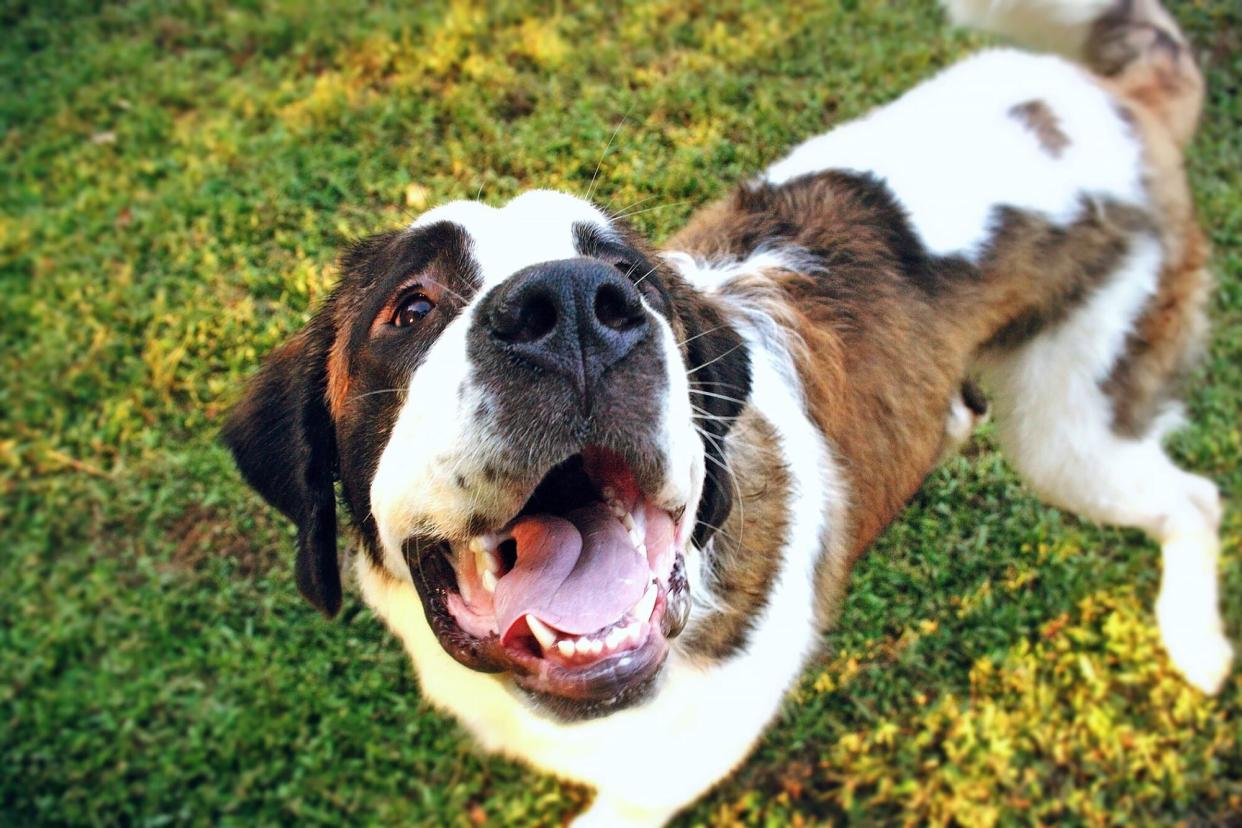Here's Exactly What To Do If You're Approached by an Off-leash Dog

Joseph Alfonso / EyeEm / Getty
Even if you're a pet owner and lover, it can be alarming to be out in public and find yourself crossing paths with an unfamiliar animal. When you're managing fear and surprise, you may feel unsure of what to do if approached by an off-leash dog because you can't predict their behavior.
And if your own dog is with you when an off-leash dog approaches, it's even harder to know how either dog will react and what could transpire between them, says Darcia Kostiuk, DVM, with ORIJEN and ACANA pet foods. Not only will you need to keep your pup at ease, but you'll want to calm your nerves and do your best to dissolve the interaction.
Here is an expert guide on exactly what to do when approached by an off-leash dog to keep you and your pup safe.
Recognize the Dangers
If you and your pet are approached by an off-leash dog while taking a walk, it is vital to recognize the dangers, says Casey Robinson, DVM and the IndeVets Detroit area medical director. You—or your dog—could experience serious injuries, even if the un-leashed pup seems friendly.
"It is important to recognize that even well-mannered dogs can react aggressively if confronted by another animal during a walk—this can be an artifact of either protecting itself or from protecting you," she continues. "There are certainly other lingering risks that should be considered as well, one of which being transmission of disease between animals, like rabies."
Don't Try and Catch the Dog
Because you can't ask a dog, "Hey, what's going on?" like you could with a human, it's impossible to know why they are without a leash. They could be a stray or a family pet who somehow escaped their owner. Either way, this free-roaming animal may be anxious and on high alert. While Kostiuk says well-meaning humans often try and catch the dog, doing this can put you and your pet in an unsafe situation. Call your local animal control instead.
RELATED: 4 Safety Tips to Keep in Mind Around Dogs and Babies
Always Carry Treats
Because you never know what type of creature you could encounter while strolling in the park or a new place, it can be smart to always carry treats with you on your walks, says Irith Bloom, CPDT-KSA, CBCC-KA, CDBC, and member of the Daily Paws Advisory board. She recommends throwing a big handful of treats toward the pup. "While the off-leash dog is sniffing, you can carefully move away. Be sure to keep your eye on the off-leash dog as you move away," she says.
Avoid Eye Contact
If you have no treats, Bloom recommends standing tall and facing the off-leash dog's direction without looking directly at the dog's eyes. From here, she says you can slowly move away by stepping backward or moving away at an angle. The goal is to ensure you're still facing the dog but without making eye contact.
"If your own dog is upset, use a treat to lure your dog in the direction you need to go, but do your best to keep your eyes on the off-leash dog at all times," she continues. "Keep moving until you are completely out of sight of the off-leash dog."
Stay Calm—and Don't Make Sudden Movements or Noises
Though it isn't easy to keep your composure when you're shaking with fear on the inside, being calm could keep you and your dog safe. A calm demeanor will translate to your animal and will hopefully facilitate a more benign interaction, says Anita Patel, DVM, the IndeVets Georgia, North Carolina, and South Carolina area medical director.
"As animals can certainly pick up on changes in body language, ensuring that movements are slow and non-threatening is crucial in high-stress situations such as these," she explains. This means no significant movements or high-pitched sounds. Calm, slow, and steady does it.
RELATED: The Do's and Don'ts of Helping Dogs in Hot Cars
Say 'Sit' in a Confident Voice
Bloom says if you feel calm enough to try this, say "sit" in a loud, confident voice to the off-leash dog and then make a giant "sit" hand signal. To do this, she says you should let your arm hang at your side with the palm facing out (towards the off-leash dog) and then raise your arm until it's pointing at the sky.
"Many dogs know either the word 'sit' or the sit hand signal and will stop and sit when you do this," she continues. "As soon as the dog stops and sits, throw treats in its direction. The dog will almost certainly stop to eat the treats, which gives you a chance to move away mindfully."
Do Not Run
While every bone in your body may tell you to sprint as fast as you can away from a dog you don't know, the opposite approach is safer. Robinson discourages fleeing the situation as this may instigate a more aggressive reaction from the approaching dog. Instead, you want to gradually back away calmly.

